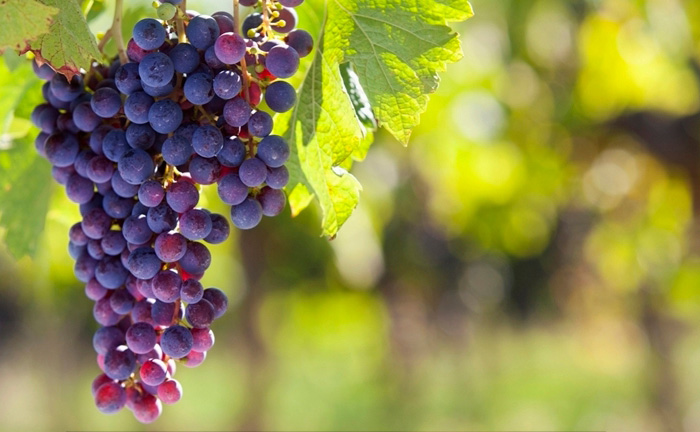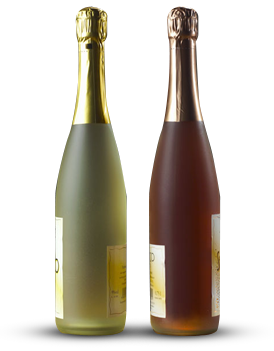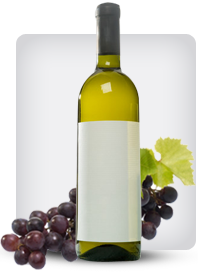

Tag: Wine
Wine Access Magazine
Posted onWhat was it? We’d become utterly disenchanted with all but a handful of Spanish wines sent to us by struggling national importers, most were overpriced and overrated. Billions of Common Market euros poured into new Spanish plantings, fancy bodegas with circular tasting rooms and surround sound. What was there to show for it? The funny money paid for fancy labels and (too much) American wood, but none of the expensive trimmings could replace the real deal. So when we heard about a pre-Franco vineyard, tasted the exquisite 2004 Partal — we just had to go see for ourselves.
Our lunch with Pepa was a lesson in 20th century Spanish history viewed through the eyes of a winegrower. Over roasted baby goat paired with the 2004 Partal, Pepa told us about his grandmother, “La Balcona”, a tenant farmer who, in 1940, right after the end of the Spanish Civil War, was given the opportunity by one of the local terratenientes to buy one of the prime vineyard sites in Murcia for next to nothing. She immediately ripped out the wheat and saffron and planted Monastrell bush plants. But Murcia would pay a hefty price for its opposition to Franco during the civil war. Franco cut off state funds to the region, and the young people fled, moving to Barcelona and Madrid. The fields were lying fallow, and the few grape growers selling to the local co-op found their Monastrell wines selling for 10 cents a liter in the retail stores of Madrid!
It took almost 35 years for Franco to pass and for Murcia to begin its comeback. And it took still another 30 years for the roots of La Balcona’s Monastrell to spider underground, searching out water and nutrients, infusing these incredibly healthy bush plants with the explosive red fruit intensity that is found in this brilliant, utterly singular Spanish red wine.
Production of Partal is tiny. Today, most is sold in Murcia. But we weren’t making an 8 hour trek just for a history lesson and some roasted goat. The 15 remaining cases of the 2004 Partal have been earmarked for WineAccess members, a sensational tribute to La Balcona. Not to be missed for the wine, its history, and that old-vine Mourvedre.
More Malbec Wine Articles
I Love Kosher Wine – A New Zealand Sauvignon Blanc
Posted onNew Zealand has become a real success story for wine. Not all that long ago they were making wine from virtually unknown grapes such as Isabella, which isn’t even a member of the wine grape family. Now their signature grape, Sauvignon Blanc, has stole a lot of France’s thunder. New Zealand’s Sauvignon Blanc wines are prized the world over, and are quite distinctive.
The wine reviewed below comes from the South Island wine region of Marlborough, the country’s most famous wine area; one particularly known for its Sauvignon Blancs. Unusual for New Zealand, this wine is Kosher. It has been flash-pasteurized; the technical word is Mevushal, which means that observant Jews consider it to be Kosher, no matter who serves it. Once upon a time Mevushal meant boiled wine, a process virtually destroying its taste and eliminating its use in pagan rituals. The presently used flash pasteurization process is much more gentle. As you’ll see, the wine reviewed is by no means tasteless.
OUR WINE REVIEW POLICY All wines that we taste and review are purchased at the full retail price.
Wine Reviewed
Goose Bay Sauvignon Blanc K/P 2007 13.0% Alcohol About $ 20.00
Let’s start by quoting the marketing materials.
Tasting Note: Pale yellow colored, the nose shows intense aromas of sweet pea pods and passion fruit. Medium to full-bodied, flavorful tropical fruit and gooseberry flavors with pea pod on the finish, which is zesty. Serving Suggestion: Pan-fried fatty white fish with tropical fruit salsa. And now for my review.
The first sips tasted of pea pods. The wine was a bit unctuous. The initial food pairing involved a sweet and sour commercially barbecued chicken breast accompanied by potatoes roasted in chicken fat and a salad (more of a salsa) consisting of tomatoes, tomato puree, sweet pimento, hot peppers, and vegetable oil. I noted a good balance of crisp acidity and sweetness. The acidity intensified somewhat with the roasted potatoes, doing a good job of cleansing the palate. On the other hand the wine was weak when faced with the salad.
The second pairing involved an omelet. The wine’s acidity was crisp and refreshing but I am getting tired of the pea pod taste and smell. The accompanying grape tomatoes removed the offending taste but there wasn’t all that much flavor left.
The final meal centered around meatless lasagna containing tomatoes, peas, cottage cheese, and sliced olives topped with mozzarella cheese. The wine finally succeeded in shaking off the pea pods and displayed bright acidity but not a lot of fruit. I finished with a light cheesecake with a graham cracker crust. I think it may have been the sugar that brought back the pea pods.
I finished with the cheese pairings. With a Provolone there was something in the background, probably grapefruit. Then I went to an Emmenthaler (Swiss) but even with this high-quality, flavorful (nutty) cheese the familiar, undesired taste came back.
Final verdict. It doesn’t happen often but one taste managed to ruin everything. Actually, I am not at all sure that even without those pea pods I would buy this wine again. There are so many great New Zealand Sauvignon Blancs. But this is hardly one of them. If you want Kosher wine, there are a lot of other choices in all price ranges. Keep posted. I’ll be reviewing more of them.
Resveratrol and Red Wine Grape Extract Safety
Posted onWhen polyphenols including Resveratrol, Quercetin, and red wine grape extracts are concentrated into a daily tablet equivalent to over 100 Bottles of red wine (400 – 1000 mg) or more, there is one immediate question, is it safe?
Indeed, scientists who study these nutraceutical supplements have and are continuing to use similar scientific research techniques to those used in the pharmaceutical industry to evaluate their potential health benefits and safety.
In 2002, the National Institute of Environmental Health Sciences commissioned a report entitled, “Trans-resveratrol Review of Toxicological Literature.” A review of more than 200 referenced scientific studies were included, and the report stated that there were no reported adverse effects from Resveratrol on humans.
Animal studies have used the human-equivalent of over 1,000 mg (10 mg/kg of bodyweight) of Resveratrol, and have shown no toxic effects. Massive dosage studies were also performed on animals. “The no observed adverse affect level (NOAEL) was 300 mg/kg/day,” which would be a human dosage of 30,000 mg or 10 – 100 times the maximum concentrations contained in human high-concentration oral nutraceutical dosages.
Human studies also confirm the safety of Resveratrol in highly concentrated forms. Studies including those at Marywood University, University of Leicester (UK) and University of Michigan, etc. all found no significant side effects and no evidence of toxicity.
Personally, members of our company have taken 2,000 mg of Resveratrol and red wine grape extracts for extended periods with no side effects.
Many nutraceutical manufacturing plants are certified by the FDA (US Food and Drug Administration), TGA (Australia’s FDA Certification), NSF, USP (US Pharmacopia), etc. (be sure to check company’s websites for such information).
According to Dr. Joseph Maroon, in his recent book, The Longevity Factor, How Resveratrol and Red Wine Activate Genes for a Longer and Healthier Life (page 198) “Having seen both a pharmaceutical manufacturing plant and a dietary supplement facility I am assured that the manufacturing standards are virtually identical.”
High quality Resveratrol supplements have been on the market since the year 2000, and numerous patients, companies and doctors have reported their safety.
NOTE: Of course, any side-effects experienced as a result of taking Resveratrol, Quercetin, red wine grape extracts, or any other nutraceutical supplements should be reported to the manufacturer, and to your doctor.
Wine Preserver
Posted onDon’t you hate when you open a bottle of wine and have to leave it unfinished?
Because if you don’t finish it, the wine’s going to get stale. When you come back a few days later to pour a glass, the aroma and flavor have eroded. The wine doesn’t taste like it did when you first opened the bottle, and the best you can do with it is add it to spaghetti sauce.
Thank heavens they’ve invented wine preserver!
You see, when a bottle of wine is opened oxygen begins to decay the wine. Exposure to air deteriorates the wine’s color, fragrance and flavor. The principle behind wine preservers is to remove the oxygen, keeping the original wine characteristics intact as though the cork had never been removed.
There are a few different types of preservers available today, ranging in price from $ 7 to about $ 900.
The simplest one is a can of inert, non-toxic gas (the company doesn’t specify, but most likely it’s argon gas) that you squirt into the wine bottle while slipping the cork back in. The gas replaces the oxygen in the bottle, keeping the wine from spoiling.
This product, marketed as Private Preserve Wine Preserver, promises to give about 120 uses from one .60 ounce can. This preserver lists at $ 11.95 per can, although you may be able to find it online at about $ 7.
Another simple wine preserver is basically a vacuum that sucks the oxygen out of the wine bottle. Some offer bottle stoppers of different sizes in order to fit most wine bottles. Two popular models are Vintage Vac and V-Gauge Wine Vacuum, and they retail between $ 20 and $ 40.
A more complicated wine preserver is the Wine Saver PRO Preserve & Serve Wine System. This preserver allows five wine bottles to be simultaneously preserved with the argon gas canister located under the counter. Promotional materials state that this system will preserve opened wine for weeks, primed and ready to pour through their dispensing spigots. This model retails for about $ 900. It is designed primarily for bars, restaurants and hotels, or for the home wine cellar.
All of these products have received favorable reviews, indicating they do a good job at preserving the freshness of opened wine for days and even weeks at a time.
Find More Zinfandel Wine Articles
Red Wine Refrigerator – Why You Need One
Posted onMost people don’t think to chill their red wine. Unfortunately, that means they aren’t getting the best out of the bottles they buy. When you invest in a good bottle of red wine, it makes sense to treat it with respect and ensure that it can mature correctly, which is only possible in optimum conditions.
Originally, red wine would have been kept in a wine cellar. These underground chambers were perfect for making sure the wine stayed at just the right temperature, no refrigeration needed! These days, very few people actually have a wine cellar, though part of your basement could potentially be converted into one. The solution? A red wine refrigerator.
Regular Fridges Just Don’t Cut It
Why can’t you just pop your tinted wine into your kitchen fridge? There are a number of reasons this is NOT a good idea.
First of all, the kitchen refrigerator is not meant for wine. It’s too cold. While the wine needs to be cool, it should not be refrigerated at any temperature lower than 50 degrees F. The average kitchen fridge ranges from 35-38 degrees, which is far too low for your red wine. A wine bottle refrigerator can be set to just the right temperature, ensuring the best quality wine possible.
Another consideration is vibration. Regular fridges have pretty strong vibrations, but if you know anything about wine, you know it matures best when left unmolested and allowed to sit for long periods of time. The vibrations in a regular fridge is very disruptive to this process, so you need a way to cool the bottles without shaking them up at all. Red wine refrigerators do this very nicely, since they have built-in anti vibration mechanisms that keep the bottles chilled and undisturbed.
When choosing a cooler for your bottles, you’ll find that it is very important to look for one that fits the space you have. There are fridges that only hold 6 bottles for those of you who don’t need a lot of space and plenty of larger sizes, as well. Built-ins work very well for those who have a full collection.
You need a red wine refrigerator if you are serious about your collection of alcoholic beverages. Otherwise, the bottles you own are not being kept at the right temperature and this affects the quality of the wine.
Related Red Wine Articles
popular posts
-

How to Decant Merlot Properly: A Guide to Unlocking Its Full Potential Merlot, with its plush texture and approachable profile of plum, cherry, and chocolate notes, is one of the world’s most beloved red wines
12-22 2025While often enjoyed straight from the bottle, taking the time to decant a Merlot can dramatically elevate the experience. Decanting serves two primary purposes: Read More
-

Pinot Noir Wine Subscription Reviews: A Curated Journey for the Discerning Palate For wine enthusiasts, few grapes inspire as much devotion and discussion as Pinot Noir
12-21 2025Celebrated for its elegance, aromatic complexity, and remarkable ability to express *terroir*, Pinot Noir can be both thrilling and intimidating to explore. This is Read More

